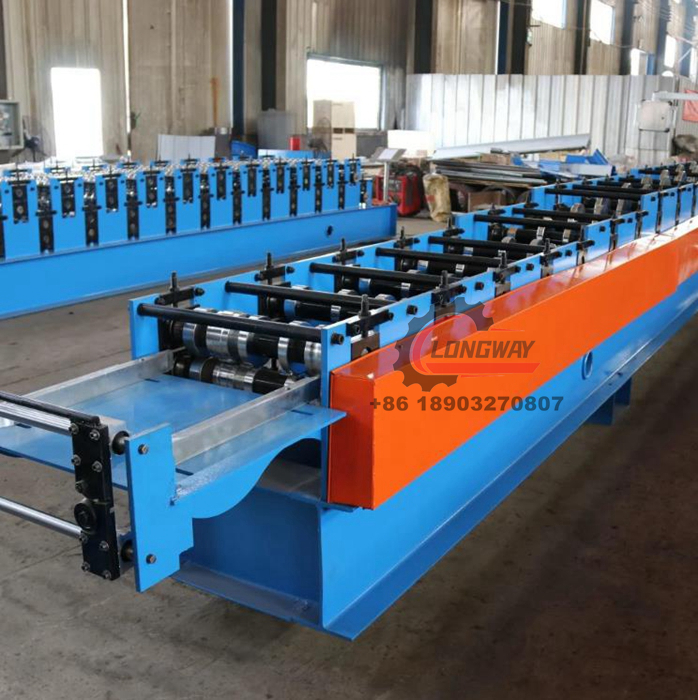cut to length line machine
Understanding the Cut-to-Length Line Machine Key Features and Applications
The cut-to-length line machine is an essential piece of industrial equipment used primarily in metal processing and manufacturing industries. This machine is designed to cut large rolls or sheets of material into specified lengths, enhancing the efficiency and versatility of production lines. With the growing demand for customized product sizes in various sectors, the importance of cut-to-length line machines has surged, leading to advancements in technology and capabilities.
How Does It Work?
At its core, a cut-to-length line machine operates by unrolling material from a coil, feeding it through several processing stations, and then cutting it to predetermined lengths. The process typically involves several key components, including
1. Uncoiler This device holds the metal coil in place and allows it to unwind smoothly. It minimizes the risk of damage to the material during the initial feeding process. 2. Leveling Unit As coils often arrive with a certain degree of curvature or distortion, leveling units are utilized to flatten the metal sheets. This step is crucial to ensure accuracy and quality in measurement before cutting.
3. Shear or Cutting Tool The cutting mechanism is one of the most critical components of the machine. It can either be a rotary shear or a guillotine-type shear, designed to make precise cuts without causing burrs or deformation.
4. Stacking System After cutting, the newly formed sheets are often stacked for easy handling and further processing. Automated stacking systems can enhance efficiency, reducing the need for manual labor.
Benefits of Using Cut-to-Length Line Machines
The efficiency of a cut-to-length line machine can significantly contribute to the productivity of the manufacturing process. Some of the benefits include
- Customization Manufacturers can produce tailored lengths of materials according to specific customer requirements. This flexibility is vital for industries that require precise dimensions, such as automotive, aerospace, and construction.
- Reduced Waste By optimizing the cutting process, companies can minimize scrap material, thereby increasing overall material utilization and reducing costs
.cut to length line machine

- Increased Production Speed Automated systems allow for high-speed operations, ensuring quick turnaround times and meeting demand without compromising quality.
- Improved Safety Modern cut-to-length line machines often come equipped with safety features to protect operators during the cutting and handling processes, thereby reducing workplace accidents.
Applications of Cut-to-Length Line Machines
The applications of cut-to-length line machines span various industries. Here are some notable uses
1. Metal Fabrication Whether used for aluminum, steel, or other metals, these machines are integral in producing parts for machinery, vehicles, and structural applications.
2. Construction Industry Cut-to-length machines help fabricate components necessary for building construction, ensuring that materials fit specific construction requirements.
3. Electrical Industry Copper and other conductive metals are often processed using cut-to-length machines for producing wires and cables of specific lengths.
4. Manufacturing Many manufacturers rely on these machines to create product components, ensuring that they have precisely sized materials for assembly lines.
Conclusion
In conclusion, the cut-to-length line machine plays a critical role in modern manufacturing processes. Its ability to produce customized lengths of material efficiently and safely makes it an invaluable asset across multiple industries. As technology continues to evolve, these machines are likely to become even more advanced, further enhancing production capabilities and pushing the boundaries of manufacturing excellence. Embracing such machinery can provide companies with a significant competitive edge in today’s fast-paced market.
-
Roof Panel Machines: Buying Guide, Types, and PricingNewsJul.04, 2025
-
Purlin Machines: Types, Features, and Pricing GuideNewsJul.04, 2025
-
Metal Embossing Machines: Types, Applications, and Buying GuideNewsJul.04, 2025
-
Gutter Machines: Features, Types, and Cost BreakdownNewsJul.04, 2025
-
Cut to Length Line: Overview, Equipment, and Buying GuideNewsJul.04, 2025
-
Auto Stacker: Features, Applications, and Cost BreakdownNewsJul.04, 2025
-
Top Drywall Profile Machine Models for SaleNewsJun.05, 2025








